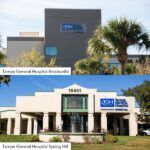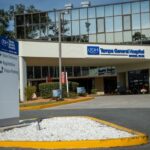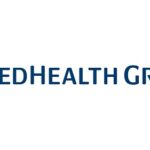 As 2008 rapidly approaches, healthcare providers will find themselves amid a flurry of dramatic change. Moving into the next decade, the entire US healthcare system will continue the move towards a paradigm shift of a “consumer-driven” model. The American public will perhaps have the greatest impact on healthcare economics and operations over the next year. Healthcare facilities and providers will need to remain on the forefront of any proposed changes in federal/state regulations as well as the reimbursement landscape.
As 2008 rapidly approaches, healthcare providers will find themselves amid a flurry of dramatic change. Moving into the next decade, the entire US healthcare system will continue the move towards a paradigm shift of a “consumer-driven” model. The American public will perhaps have the greatest impact on healthcare economics and operations over the next year. Healthcare facilities and providers will need to remain on the forefront of any proposed changes in federal/state regulations as well as the reimbursement landscape.
- Transparency of performance measures
- Inpatient reimbursement changes
- Re-structuring of Hospital-Physician business arrangements
- Increased utilization of information technology
- Integration of hospital networks and services
As healthcare providers look at the competition, there are vast amounts of information that is publicly available regarding performance in clinical, operational, and financial measures. CMS has supported a rapid adoption of public reporting of data so that consumers can make their own decisions. There are some states that have enacted public reporting of measures that were once considered “classified” to outside organizations. In fact, Pennsylvania was the first state to widely report clinical outcomes across clinical conditions as well as financial information. Some hospitals are now reporting outcomes and cost information on their own websites. The transparency movement is expected to grow in 2008 and the data being collected will be further refined.
In 2008, CMS will convert to the Medicare-Severity Diagnostic Related Groups (MS-DRGs) for inpatient reimbursement. Under the existing system, payment methodology is garnered from charge-based information. Using the MS-DRG system, CMS has made its first stride in a shift towards a cost-based reimbursement structure. This new system increases the current DRG structure to add an additional 207 DRGs (bringing the total to 745). In Corazons specialty of cardiac and vascular, the existing 55 DRGs will be replaced with 87 new DRGs. There are several cardiac and vascular DRG groupings that will gain an additional tier based upon the patients severity of illness. In order to capture the most appropriate DRG assignment, inpatient facilities will be required to have a much more focused approach to documentation and coding than ever before. Over the last decade, hospitals have made great strides in aligning their strategies with physicians using formal business partnerships. Corazon has witnessed several partnership strategies that have provided economic win-wins for both parties. Over the next year, these arrangements will face increased scrutiny related to the structure of the relationship to guarantee no violation of federal and/or state regulations. In fact, Corazon just recently evaluated several partnerships to determine whether the arrangement may need to “unwind” or undergo some form of restructuring so that it is compliant with legal and regulatory statutes. The national goal of an integrated electronic medical record by 2010 is rapidly approaching. The OIG has already granted safe harbor status for those healthcare facilities that are willing to subsidize physician practices for the purchase of information technology (IT) platforms. There is an accelerating adoption of IT that provides clinical and administrative capabilities. Throughout 2008, it will become more evident that the ability to accurately capture and aggregate data is imperative, which will not be possible without use of robust IT systems. On a final note, Corazon is finding that many facilities are now looking at efficiency in daily practice, which may be garnered through a network approach to delivery. Hospitals as well as physician groups are formally aligning themselves with health systems [and networks] to leverage the supply chain as well as gain operational efficiencies across specialty services. For example, in cardiovascular, there are hospitals that are staffing specialty areas such as the cardiac cath lab using a regionalized staffing pattern across several facilities. It is clear that the year ahead looks to be a time to embrace change. Fortunately, the healthcare horizon looks bright as any changing forces do not appear to impede the quality or growth of our current healthcare system. Providers that are “early promoters” of these changes will likely be the healthcare leaders for the remainder of this decade and continue to build a foundation that supports further growth for tomorrow!

























